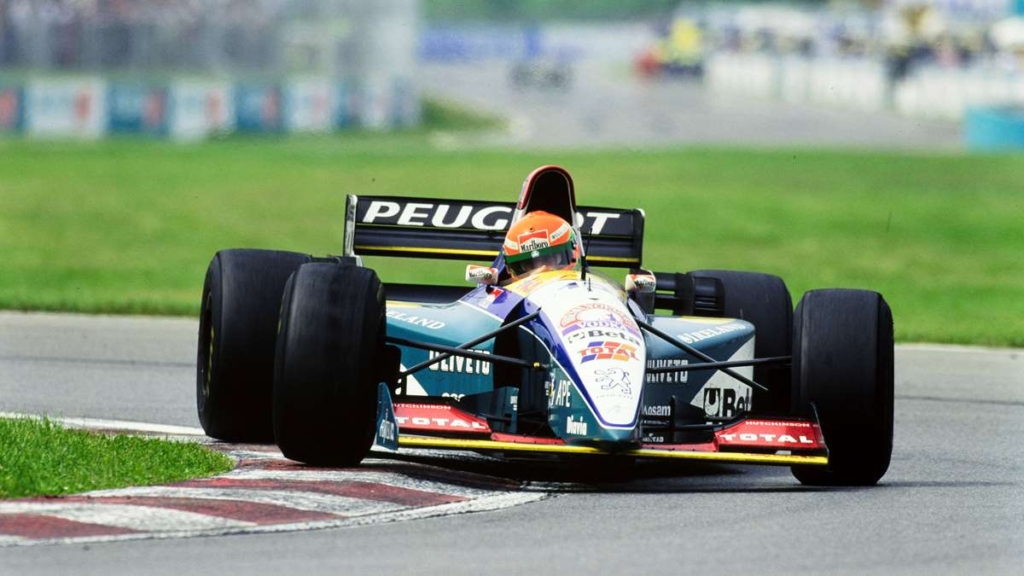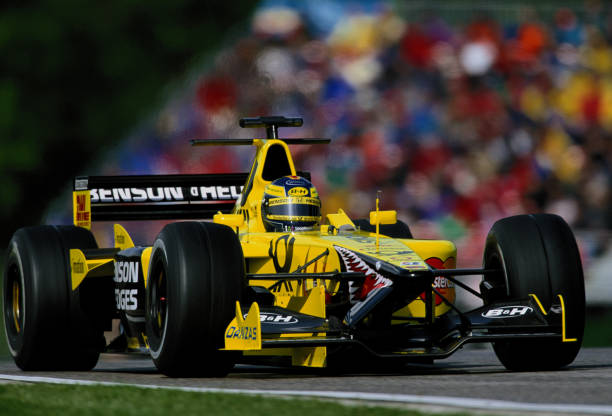Jordan Grand Prix, also known as Jordan F1, burst onto the Formula One scene in 1991 as a young, ambitious team led by Irish businessman and former racer Eddie Jordan. Though Jordan only competed in F1 from 1991-2005, they left behind a legacy as a plucky underdog team that punched above their weight and occasionally shocked the giants of the sport.
Eddie Jordan’s Beginnings in Motorsport
Before founding his own F1 team, Eddie Jordan had been building his experience in racing for over a decade. After some success in Irish and British Formula Ford championships, Jordan moved up to Formula 3, where he claimed the British Formula 3 title in 1987 with driver Johnny Herbert. Jordan then captured the Formula 3000 crown two years later with Jean Alesi, demonstrating his talent for spotting and developing promising young drivers.
By the late 1980s, Jordan had set his sights on Formula One. He assembled a skilled group of designers in Gary Anderson, Andrew Green, and Mark Smith to produce Jordan’s first F1 car. Lacking the budget of larger teams, Jordan took an unconventional approach – he focused on getting the car on track first to attract sponsorships rather than seeking sponsors beforehand. His goal was to race in the 1991 F1 season.
Jordan’s First Steps in Formula One
To develop the new car, dubbed the Jordan 911, Jordan hired veteran driver John Watson for testing. Painted in bold green colors with the Irish tourism logo, Jordan secured several key early sponsors. A 7 million dollar deal with 7UP provided critical budget, while partnerships with companies like Fuji Film rounded out Jordan’s finances.
However, one early setback was pushback from Porsche over the “911” name – Porsche owned the rights and threatened legal action. Eddie Jordan traveled to negotiate with Porsche’s lawyers in person. Though Porsche offered him a brand new 911 Carrera road car, Jordan stood firm. Eventually Porsche backed down, and the F1 car was renamed the “Jordan 191.”
The 1991 season saw Jordan field cars for drivers Bertrand Gachot and Andrea de Cesaris. The team got off to a promising start as de Cesaris recorded several fourth place finishes, including at challenging tracks like Canada and Mexico. By the end of the season, Jordan had scored 13 points and placed fifth out of 18 teams in the constructor’s championship – an incredible debut season.
Jordan Signs Future Champion Michael Schumacher
Late in the 1991 season, Jordan pulled off one of the most inspired driver signings in F1 history. When driver Bertrand Gachot was suddenly sent to prison, team manager Trevor Foster started searching for a replacement on very short notice. At the Belgian Grand Prix, they signed a little-known young German driver named Michael Schumacher to make his F1 debut.
In one of the sport’s most storied debut races, the 22-year-old Schumacher stunned the F1 world by qualifying 7th. In the race itself, Schumacher’s car broke down, but he had turned heads up and down the pit lane with his speed. The very next race, Schumacher was signed by Benetton where he would win consecutive world championships in 1994-1995.
Battling Financial Difficulties
On track Jordan were proving competitive, but financially they faced an uphill struggle. By the end of 1991 Eddie Jordan had accumulated significant debts trying to keep the team afloat. As described by one team member:
“We had a big overdraft with the bank. I don’t know the real numbers, but I can estimate that Eddie had a budget in mind of around $7.5 million, and that first season cost around $11m.”
With money tight, it took a surprise phone call over the 1991 Christmas break from none other than legendary driver Ayrton Senna to spark a critical partnership. Senna introduced Jordan to South African oil company Sasol, who were looking to spend marketing money on a Formula One team. Jordan’s previous year success made them an ideal target, and Sasol sponsorship deals throughout 1992 and 1993 provided much needed budget.

First Win After Years of Close Calls
Early seasons saw Jordan come tantalizingly close to race wins, only to lose out late due to bad luck and poor reliability. Fourth place finishes dotted their results for years. But finally in during the Belgian Grand Prix in 1998, after 3 podiums the previous year, it all came together in Belgium.
Damon Hill, son of Graham Hill, started third on the grid at Spa-Francorchamps. When the wet conditions caused chaos, Hill kept his car on track, charging from third to first, holding on for Jordan’s breakthrough race victory.
Team owner Eddie Jordan, never one for understatement, burst into the post-race press conference shirtless, dancing on the table in celebration. It was Jordan Grand Prix’s finest hour after years of waiting.
Punching Above Their Weight in 1999
While Jordan were always popular underdogs, 1999 marked their most successful Formula One season ever. Fielding drivers Heinz-Harald Frentzen and Damon Hill once again, the two veterans far exceeded expectations.
Frentzen emerged as a title contender, winning twice in France and Italy. Meanwhile, teammate Hill added a win in Belgium as Jordan took the fight to the mighty McLarens and Ferraris. At the end of the season, Jordan had achieved their highest ever finish – 3rd overall with 61 points.

Sold to Midland Group, End of Eddie Jordan Era
Despite competitive performances on track, Jordan remained in a precarious financial position trying to keep pace with F1’s high costs. Finally, at the end of 2004 Eddie Jordan sold his namesake team to the Midland Group, who rebranded the team Midland F1 for the 2006 season.
Over the next few years Midland F1 was resold and renamed, first as Spyker F1 then Force India. But every version clung to parts of the original Jordan DNA – the plucky, scrappy underdogs punching above their weight. This spirit endured even as drivers and owners changed.
Jordan Grand Prix’s Legacy
Although their time in Formula One was relatively brief, Jordan left behind a legacy as one of the most beloved teams in memory. Eddie Jordan’s passion and showmanship, combined with the squad’s spirited, “little team that could” mentality catalyzed a following like few others. They celebrated the rogues, the scrappers, the underfunded and overlooked.
Without deep pocket books Jordan relied on daring and innovation to shock the “big teams.” Though they were never champions, Jordan proved that in Formula One money isn’t everything. That combination of heart, daring and determination can at times trump even the fattest budgets.
So while Michael Schumacher and Ferrari dominated the statistical records, Jordan captured the affection of loyal tifosi worldwide. For the way they raced without limits, forever personifying Formula One’s inner battler, there will always be a place in fans’ hearts for Jordan Grand Prix.

